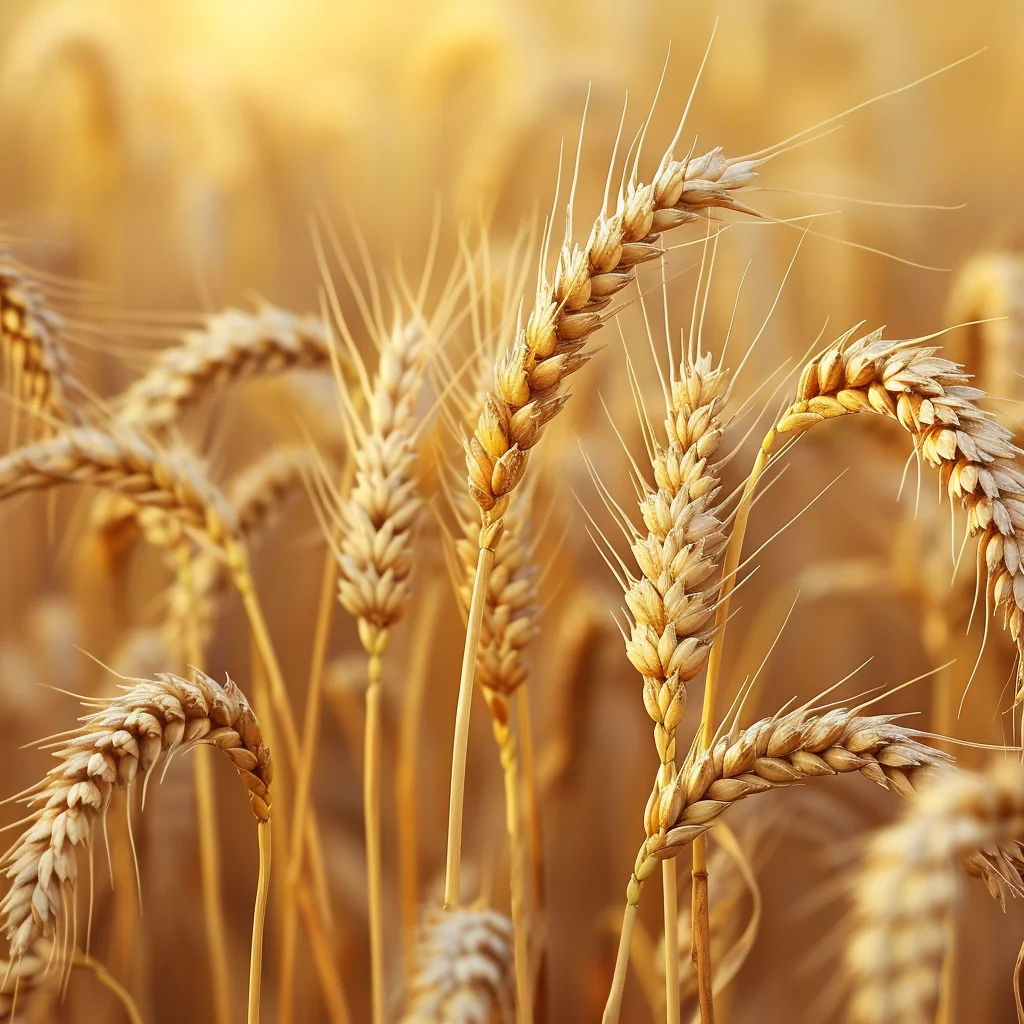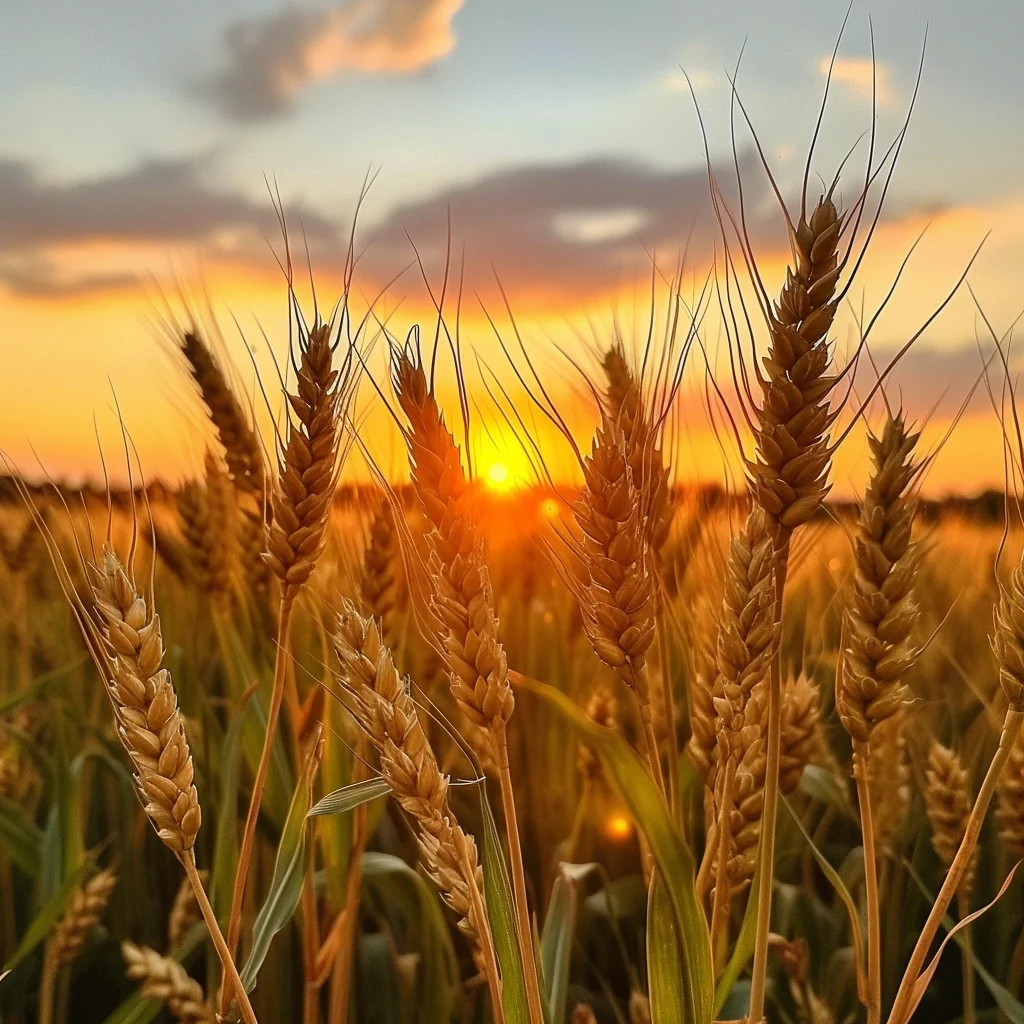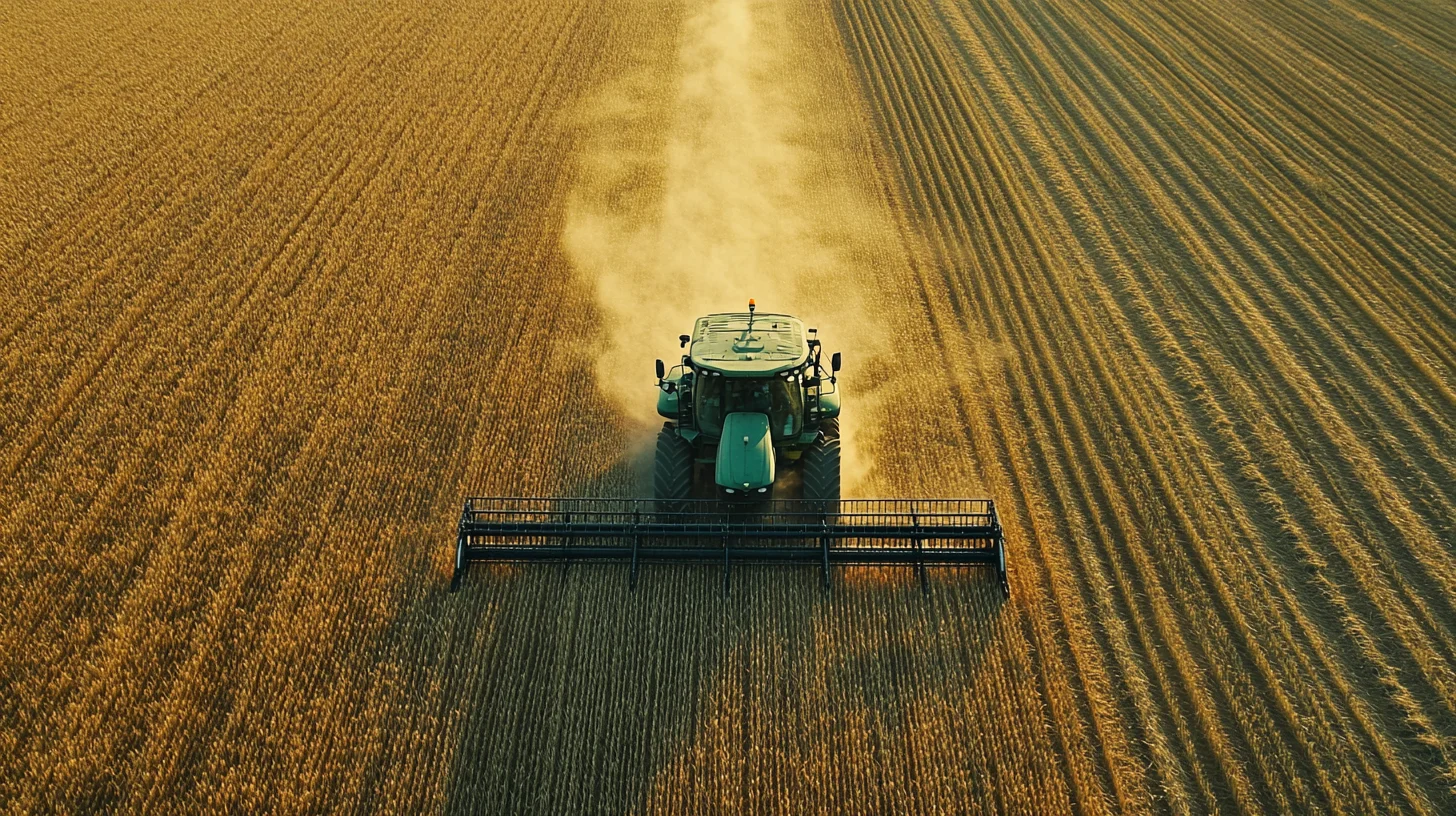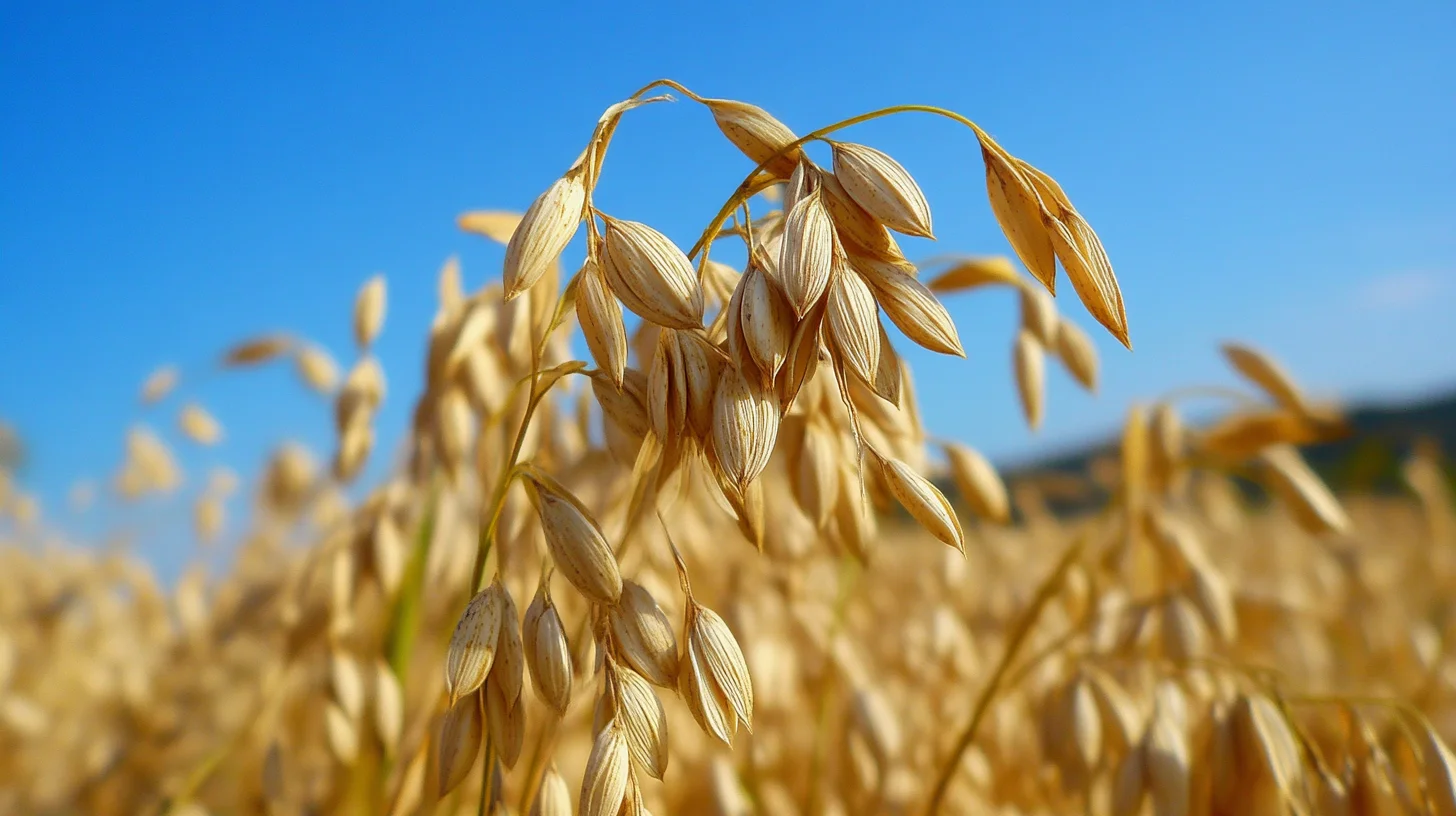Introduction
Wheat is one of the most important food crops in the world, providing nourishment to over 35% of the global population. With worldwide wheat production at over 770 million metric tonnes annually, it accounts for a significant portion of agricultural output across the globe. But which country produces the most wheat each year?
This article will identify the top wheat producing nation and discuss the key factors that allow it to top the list. We’ll also compare it to other major producers and examine why wheat production is so essential worldwide. Let’s start by looking at why this ubiquitous grain matters so much.
The Vital Importance of Wheat
Wheat is a dietary staple that much of the world depends on. Here are some key facts and statistics that showcase wheat’s invaluable role:
- Wheat is a staple food crop consumed regularly in some form by over 2.5 billion people globally. That’s more than 1/3 of the world’s population relying on wheat for basic nourishment.
- Common foods like bread, pasta, cereals, crackers, biscuits, cakes, and many other baked goods are made using wheat. It provides the base for many classic cuisines.
- Wheat contributes around 20% of total calorie intake and food calories per capita in developing nations. In Europe and Russia, it contributes over 30% of calorie consumption.
- Total global wheat production sits at around 772 million metric tonnes as of 2020. For comparison, rice production is at 509 million tonnes globally.
- The top wheat producing nations supply both domestic consumption and exports. The leading exporters in order are Russia, Canada, United States, France, and Australia.
- By trading wheat and wheat-based foods, international markets link the major producing nations with importing countries worldwide.
| Top Wheat Producers 2020 | Production (million metric tonnes) |
|---|---|
| China | 133 |
| India | 107 |
| Russia | 85 |
| United States | 62 |
| Canada | 35 |
Wheat provides nutritional value, calories, protein and essential nutrients to billions. However, consumption patterns vary regionally based on food culture:
- In Europe, wheat utilization is highest with average per capita consumption up to 150kg annually. Wheat-based foods like bread, pasta and cereals are dietary mainstays.
- In Russia and surrounding nations, average wheat consumption is also high at 150kg per person.
- Americans consume around 75kg of wheat per person each year on average.
- In Africa, per capita wheat consumption can be as low as 25kg per year in countries like Nigeria and Mozambique where cassava and sorghum are more common staples.
- India, China and Central Asia have mid-range wheat consumption levels from 50-100kg per capita. Roti, naan, noodles and steamed breads are commonly eaten.
Wheat-based foods provide sustenance to rich and poor alike across the developed and developing world. Its versatility, nutritional value and storage ability underpin its significance as a globally traded commodity. With worldwide population growth and economic development increasing demand, wheat production capacity will remain critical for the future.
Where is Wheat Grown?
Wheat production occurs on every inhabited continent, but certain regions are especially productive due to ideal growing conditions:
Fertile Plains and Steppes
Vast flatlands and grassland plains have large contiguous areas optimal for mechanized wheat farming. Major producing regions include:
- The North China Plain – Extending through Hebei, Shandong and Henan provinces.
- The Ganges and Indus River Plains of India and Pakistan.
- The steppes of Ukraine and Southern Russia.
- The Great Plains of the United States and Canadian Prairies.
- The Western Australian Wheatbelt.
Moderate Rainfall Areas
Wheat thrives best in temperate regions with annual rainfall between 300-900 mm. Too much precipitation causes disease while too little results in drought. Major moderate rainfall wheat zones include:
- The central U.S. with 400-800mm annual precipitation.
- France’s agricultural heartland sees 600-700mm of rainfall annually.
- U.K. wheat country averages 600-1000mm rainfall per year.
- Syria and Iraq both contain optimal wheat lands with 300-400mm annual precipitation.
Cool Winter Climates
While wheat can grow across a range of temperatures, mild winters allow dormancy. Major producers with temperate, cooler winters include:
- China’s wheat is mostly winter wheat requiring cold dormancy. Average winter temps are -10 to 0°C.
- Kansas averages highs of 0°C in January and February for hard winter wheat dormancy.
- Germany has ideal winter dormancy conditions, with average January lows of -1 to 1°C.
- Russia’s winter wheat goes dormant with January lows between -15 and -5°C.
Essentially, the world’s wheat breadbasket centers on cooler, temperate latitudes between 30-60° North and South. The combination of mild winters and moderate precipitation provides optimal conditions.

Factors Allowing Large Scale Production
Beyond suitable geography and climate, several other key factors allow countries to achieve high wheat outputs:
Government Agriculture Policies
- Subsidies – Direct payments to farmers support incomes and incentivize production. The U.S. paid out $3.7 billion in wheat subsidies in 2020.
- Price supports – Programs like minimum guaranteed prices create market stability. The EU uses an intervention price system as a safety net.
- Infrastructure funding – Countries invest in grain storage, ports, railways and other infrastructure to facilitate large harvests.
- Import/export policies – Tariffs, quotas and trade agreements shape global wheat flow. Russia periodically restricts exports while Egypt subsidizes imports.
- Crop insurance – Programs that protect against weather losses and crop failures help reduce farmer risks. Canada and China both have substantial crop insurance.
- Research funding – State funding for agricultural R&D produces higher yielding and more disease resistant seed varieties.
Mechanization and Technology
- Tractors and combines – Machinery replaced draft animals and manual labor, multiplying yields per farmer. The U.S. has over 3 million tractors.
- Advanced seed varieties – Scientists breed specialized hybrid wheat optimized for local climates and higher yielding.
- Precision agriculture – GPS, satellite imaging and sensors enable ultra-efficient planting, fertilizing and irrigation.
- Crop protection chemicals – Herbicides and pesticides prevent weed and pest damage. Some countries ban certain chemicals over health concerns.
Infrastructure and Facilities
- Silos and grain elevators – Allow massive bulk storage after harvest when prices are low. The largest holds over 2 million tonnes of grain.
- Milling and processing – Grinding wheat into flour adds value. The U.S. boasts over 500 wheat flour mills.
- Transportation networks – Railways, roads, ports and waterways enable moving grain from countryside to cities and abroad.
- Crop breeding facilities – Sophisticated greenhouses and labs for developing advanced seed varieties.
Skilled Labor and Education
- Mechanics and equipment technicians – Keep complex farm machinery running efficiently.
- Industry associations and trade groups – Provide education on best practices and new technology to farmers.
- Agricultural universities – Develop expert researchers and workforce with specialized training. The US has over 100 universities offering agricultural science degrees.
With the right policies, infrastructure, technology and human capital, countries can optimize wheat production and reap the rewards on domestic and international markets. Now let’s look at the key players.
The World’s Top Wheat Producers
5. The United States
- The U.S. produces over 60 million tonnes of wheat across nearly 30 million acres each year.
- American wheat output accounts for 8% of total global production.
- The Great Plains states of Kansas, North Dakota, Washington and Montana lead wheat production:
| State | % of U.S. Wheat |
|---|---|
| Kansas | 20% |
| North Dakota | 18% |
| Montana | 13% |
| Washington | 11% |
- Over 50% of U.S. wheat is exported, valued at over $10 billion annually. Top markets include Mexico, Philippines and Japan.
- The U.S. also imports high quality durum and bread wheats to supplement domestic production.
- Government subsidies and crop insurance support American wheat farmers, providing $3-4 billion annually.
- The U.S. is a leader in wheat research and innovation. The International Maize and Wheat Improvement Center (CIMMYT) in Mexico helps disseminate new technologies worldwide.
4. Russia
- Russia produces over 85 million tonnes of wheat annually across 45 million acres.
- This accounts for 11% of total global wheat output.
- Wheat fields blanket Russia’s fertile steppelands which stretch from Ukraine to Kazakhstan.
- Russia frequently imposes export restrictions when domestic prices rise. But long term goals are to stabilize supply and be a major exporter.
- Over 50% of Russian wheat is winter wheat requiring cold dormancy. Spring wheat is also common.
- Average wheat yield is around 2.5 tonnes per hectare, lower than Western Europe, China and the U.S.
- Investments in agriculture are aimed at improving grain storage and transport infrastructure.
- Government subsidies are relatively low compared to other major producers. There is a large reliance on crop insurance to support farmers.
3. India
- India produces over 100 million tonnes of wheat annually across 30 million acres of farmland.
- Wheat accounts for around 35% of total food grain production in India. Rice, maize, millet and sorghum are other major crops.
- The states of Uttar Pradesh, Punjab and Haryana are the largest wheat producers:
| State | % of Indian Wheat Production |
|---|---|
| Uttar Pradesh | 37% |
| Punjab | 23% |
| Haryana | 22% |
- Most wheat is grown in the Indo-Gangetic Plains in the north where the Ganges River provides ample irrigation.
- Over 80% of wheat is grown in the winter rabi season from October to April. Monsoon rains permit a second spring wheat crop in some areas.
- Government subsidies on electricity, fertilizer and equipment help lower costs for farmers. Minimum support price policies also incentivize production.
- India enacted the Green Revolution in the 1960s which expanded irrigation infrastructure and introduced modern farming technology. This transformed the country into a wheat exporter.
- Today, most wheat is consumed domestically with exports under 2 million tonnes annually. Food security remains a priority.
2. The European Union
- The EU produces over 137 million tonnes of wheat each year, primarily from France, Germany, Poland and Romania.
- France leads European production at around 37 million tonnes annually off nearly 5 million hectares.
- The EU accounts for around 18% of total global wheat output.
- The Common Agricultural Policy subsidizes farmers and sets minimum intervention prices.
- Large investments in agricultural research and technology have increased wheat yields significantly.
- Infrastructure improvements allow rapid exports via inland waterways and Atlantic ports.
- Top importers of EU wheat include Algeria, Morocco and Egypt. But competition from Russian exports is increasing.
- Surplus EU wheat is also used for animal feed, alcohol distillation and biofuels – secondary products that add value.
1. China
- With 133 million tonnes produced off 25 million hectares, China is the #1 wheat producer worldwide.
- China accounts for over 17% of total global wheat output.
- Wheat production occurs across several zones but the North China Plain surrounding Beijing is dominant:
| Region | % of Chinese Wheat |
|---|---|
| North China Plain (Hebei, Shandong) | 40% |
| Middle & Lower Yangtze River | 18% |
| Northeast China Plain | 10% |
- China has invested heavily in agricultural infrastructure and technology leading to high crop yields.
- Government subsidies reduce production costs for farmers. Minimum purchase prices also provide support.
- Expectations are that China will need to increasingly import wheat as population and incomes grow. But production capacity remains high.
- China both exports and imports wheat globally. Leading imports come from Canada, Australia and the U.S.
Global Wheat Trade Flows
As seen, the major wheat producers export a sizable portion of their crop supply to the global market:
| Top Wheat Exporters | Exports (million tonnes) |
|---|---|
| Russia | 32 |
| Canada | 24 |
| United States | 26 |
| France | 19 |
| Australia | 9 |
The largest importers of wheat include:
| Top Wheat Importers | Imports (million tonnes) |
|---|---|
| Egypt | 12 |
| Indonesia | 10 |
| Algeria | 8 |
| Japan | 5 |
| South Korea | 3 |
Regional trade flows largely follow geographic proximity:
- The EU supplies North Africa, Middle East and Sub-Saharan Africa.
- Black Sea exports from Russia and Ukraine provision the Middle East and Asia.
- The U.S. and Canada export to Latin America, East Asia and Oceania.
- Australia exports to Indonesia, Vietnam and the Philippines.
These established trade relationships make wheat supply more resilient to localized crop failures and shortages. The international wheat market and global value chains link producers and consumers across continents.

The Future of Wheat
Wheat will remain essential as the world population grows towards 9.5 billion by 2050. With increased affluence and urbanization in emerging economies, demand for wheat-based convenience foods is forecasted to rise. Total wheat production will need to increase an estimated 40% from current levels.
Key future trends for wheat include:
Climate Impacts – Rising temperatures, droughts and changing rain patterns may shift optimal wheat growing regions. Production may increase in Northern latitudes like Russia while Australia and India face challenges.
Precision Agriculture – Unmanned drones, GPS-guided farm equipment and data analytics will increase yields as technology improves.
Organic and Sustainable Growing Methods – Consumer demand and concerns over environmental impacts will push more eco-friendly production.
New Wheat Varieties – Scientists are developing strains that increase nutrients, boost yields and can withstand high heat as well as drought conditions.
Globalized Wheat Flows – The interconnected global wheat market and supply chains will continue expanding to balance demand. Trade disputes and policies will shape inter-country flows.
While the exact future is uncertain, what is sure is that the world’s wheat producers will continue working and innovating to provide this staple crop to feed billions.
Conclusion
In our interconnected world, the major wheat producers help feed billions across the planet through both domestic consumption and global trade. With its vast wheat farming capabilities and continued investments, China has emerged as the top wheat producing nation. However, all major producers play an important role in supplying the worldwide demand for this staple crop.
Meeting the nutritional needs of the future will require global collaboration between wheat producers, researchers, policy makers and industry. Together, they can ensure this ancient grain continues nourishing civilizations long into the future.



